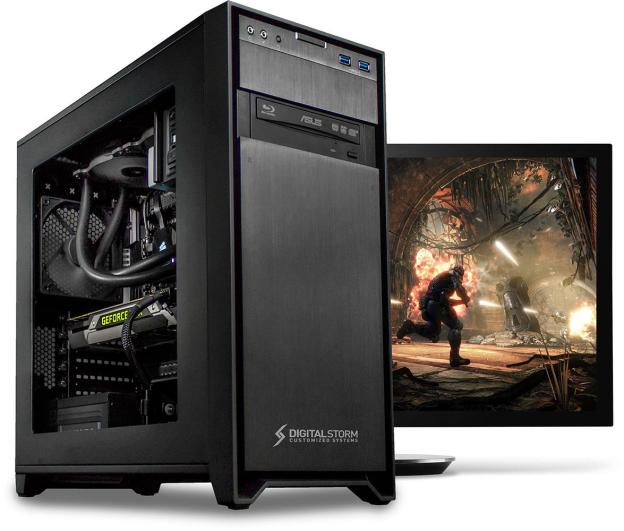
Announced in conjunction with E3, Digital Storm’s newest creation, dubbed the Virtue, is aimed to fill a void that Digital Storm considers a “lack of powerful, detailed, mid-tower gaming systems.” The company believes that the current market is flooded with ultra-tower PCs, and that these rigs normally receive much more attention to detail and craftsmanship than a traditional lower-priced mid-tower. According to the company, Digital Storm created the Virtue to blur the lines between what is considered an ultra-gaming PC, and what is considered affordable to the general gaming public.
The Virtue features a customizable setup with four separate levels, each with different stages of hardware to suit different types of gamers. A gamer that dabbles in titles featuring mid-tier intensity graphics and gameplay should be fine with Level 1, while a hardcore gamer who strives for the best graphics and gameplay experiences would be happiest at Level 4.
The base tier will get you an Intel Core i5 4570 processor and Nvidia GeForce GTX 660 2GB graphics. Now, compare that to Level 4, which boasts an Intel Core i7 4770k processor and an Nvidia GeForce GTX Titan 6GB GPU. Levels 2 and 3 contain hardware that falls somewhere between these in terms of power and capability. The only standard here is a Western Digital brand 1TB HDD (although Levels 3 and 4 feature a special edition HDD, rather than the standard model).

The casing is a constant across all levels, featuring a brushed aluminum and steel shell that measures 17.7 inches x 8.3 inches x 17.3 inches. Each level features a Corsair water-cooling system with up to five fans and a large 240mm radiator. You’ll also have access to a DVD burner or Blu-ray player, depending on what package you opt for. Each system comes packed with Windows 8 (64-bit), overclocking capabilities from 4.0Ghz to 4.4Ghz, a three-year limited warranty, and lifetime U.S.-based customer support from Digital Storm’s in-house technical support agents.
The current pricing starts at $1,448 and goes as high as $3,218. If you’re interested in getting your hands on a Digital Storm Virtue, check out the company’s website here.



